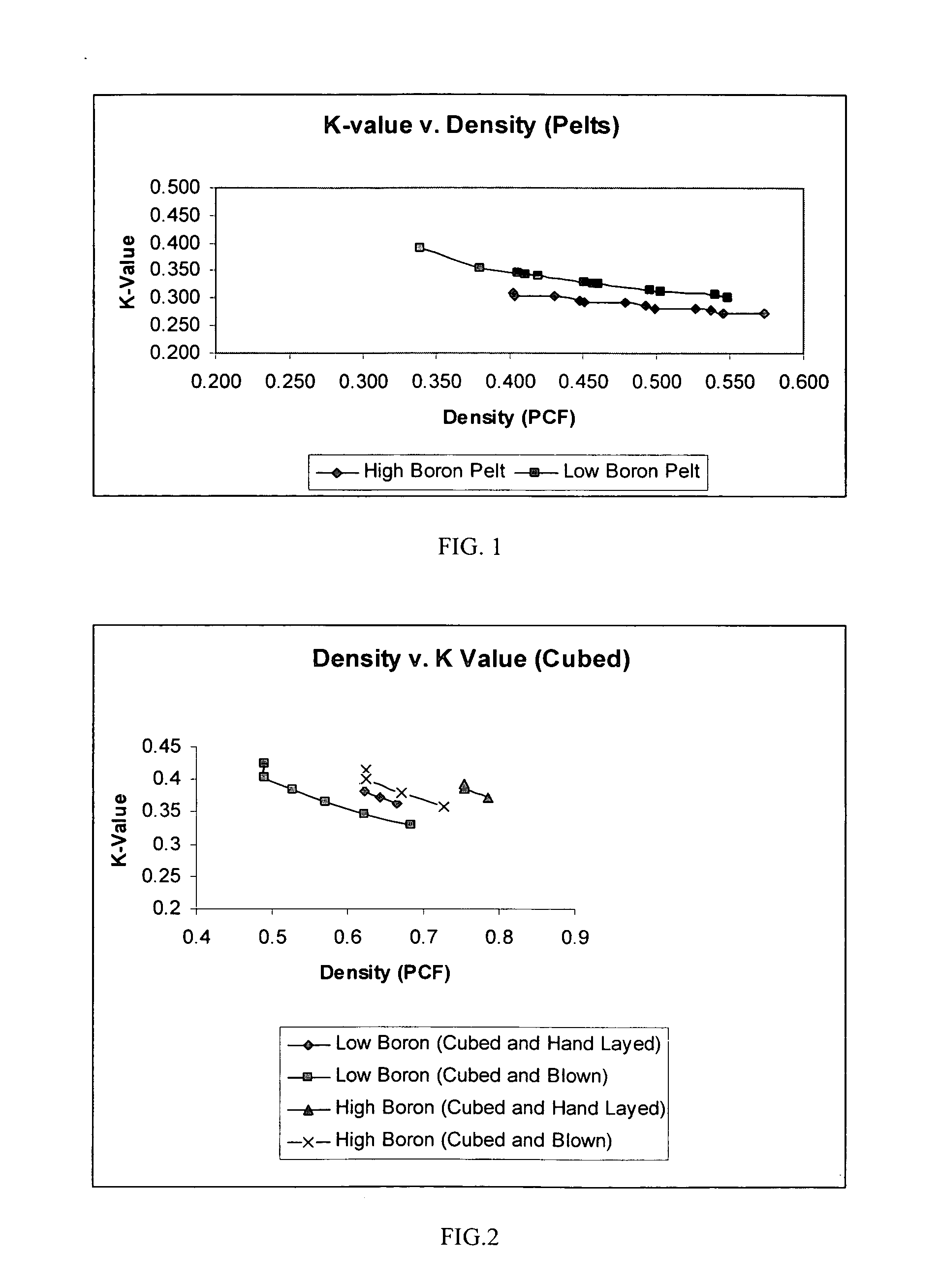Low boron glass composition for loose-fill fiberglass insulation
a glass composition and low boron glass technology, applied in the field of glass compositions for the manufacture of fiberglass insulation, can solve the problem that high boron glass does not yield a lower thermal conductivity, and achieve the effect of reducing the level of boron in glass compositions, increasing the life of the furnace used, and reducing conten
- Summary
- Abstract
- Description
- Claims
- Application Information
AI Technical Summary
Benefits of technology
Problems solved by technology
Method used
Image
Examples
examples
[0020]
TABLE 3EXAMPLEPRIOREX-1EX-2EX-3ART(WT. %)(WT. %)(WT. %)SiO266.1866.7068.468.55Fe2O30.4960.300.300.174TiO20.0870.0280.0270.026Al2O31.911.601.201.32CaO9.128.006.706.63SrO0.010.0450.0300.01MgO2.003.302.612.64Na2O14.7017.3919.1819.15K2O0.940.3570.2700.35B2O34.512.101.1001.14FeO0.133Cr2O30.0230.00480.0048SO30.1300.15Log 31975197619762012Viscosity(F)Liquidus17721571(F)Delta-T203441(F)
[0021] The low-boron glass batch of Table 4 and the high-boron glass batch of Table 2 were melted in a furnace and fiberized in accordance with well-known procedures to form glass wool fibers suitable for use as insulation.
[0022] Devitrite (Na2Ca3Si6O16) is typically the primary phase of the glass compositions of the present invention. In prior art glasses the devitrite phrase has been avoided due to the higher amount of boron, and the primary phase is typically wollastonite or diopside. Devitrite crystallizes more rapidly than wollastonite or diopside, and this can lead to problems in fiber-forming. D...
PUM
| Property | Measurement | Unit |
|---|---|---|
| viscosity | aaaaa | aaaaa |
| log 3 viscosity | aaaaa | aaaaa |
| weight percent | aaaaa | aaaaa |
Abstract
Description
Claims
Application Information
 Login to View More
Login to View More - R&D
- Intellectual Property
- Life Sciences
- Materials
- Tech Scout
- Unparalleled Data Quality
- Higher Quality Content
- 60% Fewer Hallucinations
Browse by: Latest US Patents, China's latest patents, Technical Efficacy Thesaurus, Application Domain, Technology Topic, Popular Technical Reports.
© 2025 PatSnap. All rights reserved.Legal|Privacy policy|Modern Slavery Act Transparency Statement|Sitemap|About US| Contact US: help@patsnap.com

